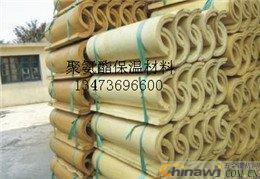What Are the Features of Polyethylene Insulation Tubes? Dacheng Xiangdong Insulation Refractory Material Factory 13473696600 15731614448
What Are the Features of Polyethylene Insulation Tubes? Dacheng Xiangdong Insulation Refractory Material Factory 13473696600 15731614448
One of the main challenges in direct buried pipelines is ensuring reliable waterproof sealing. In addition, polyethylene insulation tubes offer excellent mechanical strength and are made with high-quality materials that provide long-lasting protection. The steel casing is welded using high-strength techniques, which ensures a tight and durable seal against moisture and external elements. Furthermore, these tubes are designed to withstand high temperatures, making them superior to other types of protective tubes in harsh environments.
Buried pipelines play a crucial role in transporting oil and gas, acting as key infrastructure for ground engineering projects. They serve as the link between resource suppliers and end users. However, because these pipelines are buried underground for extended periods, they are exposed to various environmental factors such as soil characteristics and ground subsidence. Over time, this can lead to corrosion, perforation, and leaks, resulting in significant losses for both the industry and the environment. The economic impact of pipeline corrosion includes both direct and indirect costs. Direct costs involve replacing damaged components, repair work, and anti-corrosion measures, while indirect costs include production downtime, loss of products due to leaks, and damage caused by corrosion buildup. These indirect losses often exceed direct expenses and are difficult to quantify. Beyond the financial impact, pipeline corrosion can also lead to the release of harmful substances, causing environmental pollution and even posing serious safety risks. For long-distance natural gas pipelines and gathering systems, the effectiveness of anti-corrosion technologies and construction quality directly affects the safety and lifespan of the entire network. Due to the complex terrain and varying soil conditions, different external anti-corrosion solutions must be applied. The development of external anti-corrosion technology focuses on high-performance, composite materials with long service life and cost-effectiveness.
Pipeline corrosion is a major concern as it can damage both the internal and external walls of the pipes, especially when transporting corrosive media like oil and gas through complex soil environments. Once corrosion occurs and leads to leaks, it not only disrupts transportation but also causes environmental contamination and potential hazards such as fires. According to data from the U.S. pipeline industry, direct corrosion-related losses in 1975 reached $600 million. Therefore, implementing effective corrosion prevention strategies is essential in pipeline engineering.
Http://news.chinawj.com.cn Submission:
Submission: 
What Are the Features of Polyethylene Insulation Tubes? Dacheng Xiangdong Insulation Refractory Material Factory 13473696600 15731614448
One of the main challenges in direct buried pipelines is ensuring reliable waterproof sealing. In addition, polyethylene insulation tubes offer excellent mechanical strength and are made with high-quality materials that provide long-lasting protection. The steel casing is welded using high-strength techniques, which ensures a tight and durable seal against moisture and external elements. Furthermore, these tubes are designed to withstand high temperatures, making them superior to other types of protective tubes in harsh environments.
Buried pipelines play a crucial role in transporting oil and gas, acting as key infrastructure for ground engineering projects. They serve as the link between resource suppliers and end users. However, because these pipelines are buried underground for extended periods, they are exposed to various environmental factors such as soil characteristics and ground subsidence. Over time, this can lead to corrosion, perforation, and leaks, resulting in significant losses for both the industry and the environment. The economic impact of pipeline corrosion includes both direct and indirect costs. Direct costs involve replacing damaged components, repair work, and anti-corrosion measures, while indirect costs include production downtime, loss of products due to leaks, and damage caused by corrosion buildup. These indirect losses often exceed direct expenses and are difficult to quantify. Beyond the financial impact, pipeline corrosion can also lead to the release of harmful substances, causing environmental pollution and even posing serious safety risks. For long-distance natural gas pipelines and gathering systems, the effectiveness of anti-corrosion technologies and construction quality directly affects the safety and lifespan of the entire network. Due to the complex terrain and varying soil conditions, different external anti-corrosion solutions must be applied. The development of external anti-corrosion technology focuses on high-performance, composite materials with long service life and cost-effectiveness.
Pipeline corrosion is a major concern as it can damage both the internal and external walls of the pipes, especially when transporting corrosive media like oil and gas through complex soil environments. Once corrosion occurs and leads to leaks, it not only disrupts transportation but also causes environmental contamination and potential hazards such as fires. According to data from the U.S. pipeline industry, direct corrosion-related losses in 1975 reached $600 million. Therefore, implementing effective corrosion prevention strategies is essential in pipeline engineering.
Http://news.chinawj.com.cn
 Submission:
Submission: 
Pneumatic Ball Valve,3Pc Ball Valve,Sanitary Ball Valve,Threaded Ball Valve
WENZHOU FOREVER CLASSIC TECHNOLOGY CO.,LTD , https://www.fosicvalve.com